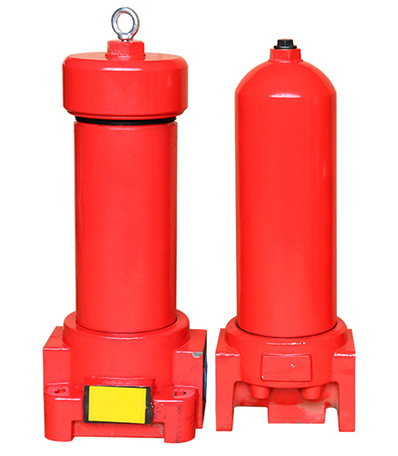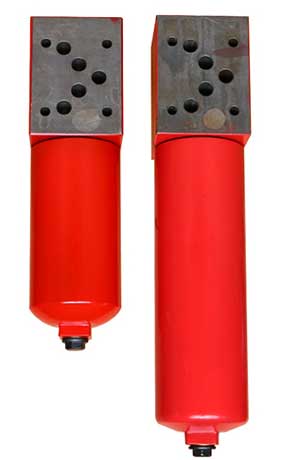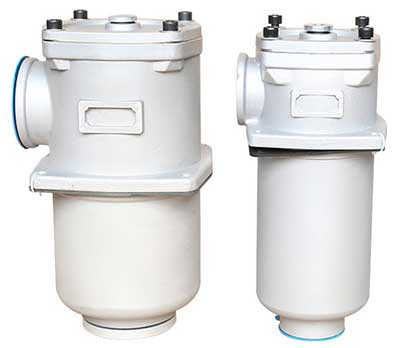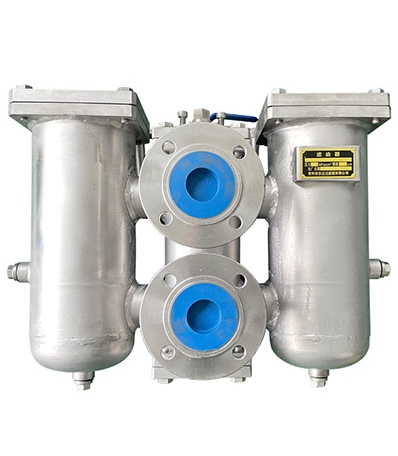Introduction
Operating in a world dominated by machine-driven tasks, there’s an increased dependency on hydraulic systems. These systems are integral components of industries such as Metallurgy, Machine Tools and Petroleum and Mining. However, the efficiency of these systems largely depends on the maintenance of the hydraulic oil's integrity. This is where LEEMIN Filters come into play—a reputable solution sought out in the realm of hydraulic fluid filtrations.
The ZU-H, QU-H Series: Pressure Line Filters
The first in our line of focus, the ZU-H and QU-H series pressure line filters, are specifically installed on the pressure pipeline of hydraulic systems. Their primary role is to sift through the mechanical impurities in the hydraulic oil. Additionally, they filter hazardous substances such as colloid, asphalt, and carbon residue which are often the aftermath of the oil’s chemical changes.
Notably, these filters come equipped with a pressure transmitting device that sends a signal when it's time to clean or replace the filter element—typically when the differential pressure at inlet and outlet point reaches 0.35 MPa. This is pivotal to prevent valve core jamming, blockage of throttle hole gaps, damping hole, and fast wearing of hydraulic components.

The DF Series: High Pressure Filters
Next is the DF series high pressure filters, superimposed filters strategically placed under the electromagnetic directional valve. Their function revolves around preventing mechanical impurities, colloid, and asphaltene particles from the hydraulic oil from ever reaching the electromagnetic directional valve.
This, in turn, hinders the instability or jamming of the valve core while also preventing premature wearing or damage to the valve. Thus, they guarantee the normal operation of the system—making them especially suitable for automatic control and servo systems.

RF: Return Line Filters
Thirdly, we have the RF return line filters. They're used for fine filtration of the returning oil of the hydraulic system. Their main impute is to filter out metal particles produced by the wear in the hydraulic system components, rubber impurities from seals, and other pollutants. Subsequently, the oil flowing back to the oil tank is kept clean.

SRLF Duplex: Return Line Filters
Lastly, we have the SRLF duplex return line filters. These filters are a combination of two single cylinder drippers and a two-position six-way directional valve. They're renowned for their simple structure and convenient usage.
Also equipped with a bypass valve and a filter element pollution blockage transmitter, these filters guarantee system safety. One key advantage of the double cylinder filter is the ability to clean or replace the filter element without shutdown, thus ensuring the normal and continuous operation of the main engine.

These Leemin Filters are widely used in hydraulic systems in heavy machinery, mining machinery, and metallurgical machinery. They are proof that LEEMIN harnesses the potential of water and ethylene glycol in hydraulic oil to improve filtration, thus contributing to machine longevity, cost reduction, and increased productivity.
Conclusion
In sum, LEEMIN Filters offer comprehensive solutions for maintaining the integrity of hydraulic systems. With their high-performance filters, they play an extensive role in preventing system failures, reducing maintenance costs, and extending the operational lifespan of hydraulic-powered machines. Indeed, the LEEMIN brand stands synonymous with quality, efficiency, and reliability in hydraulic filtration.
The ZU-H and QU-H series pressure line filters prevent valve core jamming and rapid wear of hydraulic components by removing impurities and potential blockage-causing particles from the hydraulic oil.
High-quality filtration, as provided by these filters, is crucial for the optimal functioning of hydraulic systems. They remove any mechanical impurities mixed in the hydraulic oil, such as dust, grit, or metal shavings that could otherwise lead to wear and tear on the system's various aspects.
Furthermore, the filters also remove substances like colloid, asphalt, and carbon residue, which are a result of the chemical changes occurring in the hydraulic oil over time. These substances can clog the small, vital passageways in the system, leading to pressure buildup and subsequent valve jamming.
To keep the operation running smoothly, these filters are equipped with a differential pressure transmitting device. This device sends out a signal when the filter element needs to be cleaned or replaced, usually when the differential pressure at the inlet and outlet points reaches 0.35 MPa.
By keeping the hydraulic oil clean and free from potentially harmful particles, these pressure line filters ultimately help in extending the lifespan of the hydraulic components and preventing valve core jamming. They contribute significantly to maintaining the overall health and efficiency of hydraulic systems.
The differential pressure transmitting device in the ZU-H and QU-H series pressure line filters is designed to monitor the difference in pressure between the filter's inlet and outlet.
As the filter begins to capture and retain impurities and particles from the hydraulic oil, it naturally starts to get clogged over time. This clogging causes an increase in the pressure required for the oil to pass through the filter, leading to a higher pressure at the inlet than at the outlet. This difference in pressure is what we refer to as 'differential pressure.'
The differential pressure transmitting device is set to send out a signal once the inlet-to-outlet pressure difference, or differential pressure, reaches a threshold value of 0.35 MPa. This threshold is set at a level which indicates that the filter element has trapped a substantial amount of impurities and is nearing its capacity.
Therefore, when the differential pressure reaches 0.35 MPa, it's an indication that the filter element is carrying a significant amount of particle buildup and needs to be either cleaned or replaced. Without this vital notification system, the filter could become overly obstructed, hampering its performance and potentially causing damage to the hydraulic system.
Overall, this differential pressure transmitting device plays a crucial role in the proactive maintenance of hydraulic systems, ensuring that the filter is replaced or cleaned in a timely manner, to maintain the overall operational efficiency.
The differential pressure transmitting device works by measuring the pressure at two points: the inlet and the outlet of the filter.
In general, these devices consist of a pressure sensor or a pair of sensors designed to measure the pressure levels at these two different points within the system. Most commonly, these sensors are based on mechanical, piezoelectric, or electronic principles.
At the inlet of the filter, the pressure will typically be higher because the fluid encounters resistance as it tries to pass through the filter media. This resistance results from accumulated particles and impurities that the filter has captured over time.
At the outlet, on the other hand, the pressure is lower due to the fluid having passed through the filter, and there is less resistance to its flow.
The differential pressure transmitting device takes both these readings and subtracts the outlet pressure from the inlet pressure to calculate the differential pressure. This calculation effectively quantifies the "stress" or "load" on the filter, with a higher value indicating a more clogged filter.
When the differential pressure reaches the threshold value of 0.35 MPa, it signals that the filter element is significantly obstructed and needs to be cleaned or replaced to maintain optimal functionality of the hydraulic system. Thus, the differential pressure transmitting device plays a crucial role in preserving the health and longevity of hydraulic systems and preventing issues like valve core jamming and rapid wear of components.









